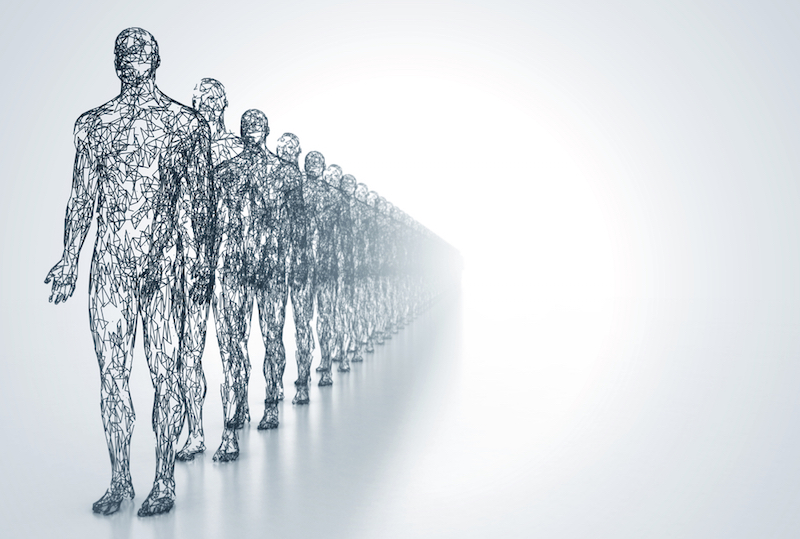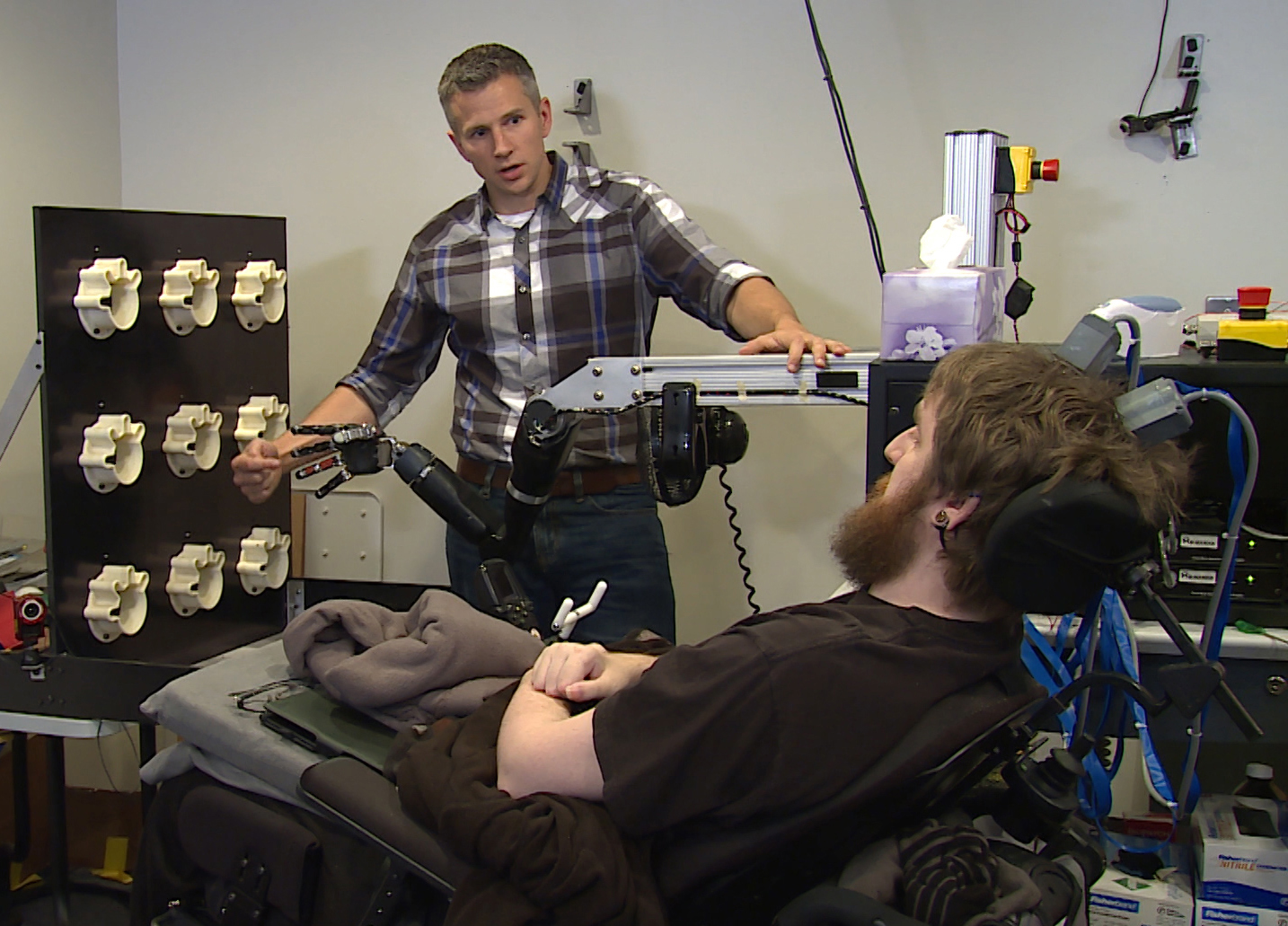5 Intriguing Uses for Artificial Intelligence (That Aren't Killer Robots)

Rather than leading to the violent downfall of humankind, artificial intelligence is helping people around the world do their jobs, including doctors who diagnose sepsis in patients and scientists who track endangered animals in the wild, experts said Thursday (Oct. 13) at the White House Frontiers Conference in Pittsburgh.
Advancements in the field of artificial intelligence (AI) haven't always been met with enthusiasm. Famed astrophysicist Stephen Hawking warned on several occasions that a fully developed AI could destroy the human race, and Hollywood sci-fi movies are rife with fierce robots battling humans for control. But at yesterday's conference — attended by the country's leading researchers, innovators, entrepreneurs and students — scientists explained how newly developed AI is accelerating research and improving lives.
Here is a look at five AI inventions that are already redefining technology. [The 6 Strangest Robots Ever Created]
Wildlife preservation

Many researchers want to know how many animals are out there and where they live, but "scientists do not have the capacity to do this, and there are not enough GPS collars or satellite tracks in the world," Tanya Berger-Wolf, a professor of computer science at the University of Illinois at Chicago, said at the conference, which was jointly hosted by the University of Pittsburgh and Carnegie Mellon University and was also streamed live online.
Instead, Berger-Wolf and her colleagues developed Wildbook.org, a site that houses an AI system and algorithms. The system inspects photos uploaded online by experts and the public. It can recognize each animal's unique markings, track its habitat range by using GPS coordinates provided by each photo, estimate the animal's age and reveal whether it is male or female, Berger-Wolf said.
After a massive 2015 photo campaign, Wildbook determined that lions were killing too many babies of the endangered Grévy's zebra in Kenya, prompting local officials to change the lion management program, she said.
Sign up for the Live Science daily newsletter now
Get the world’s most fascinating discoveries delivered straight to your inbox.
"The ability to use images with photo identification is democratizing access to conservation in science," Berger-Wolf said. "We now can use photographs to track and count animals."
Diagnosing sepsis
Sepsis is a complication that is treatable if caught early, but patients can experience organ failure, or even death, if it goes undetected for too long. Now, AI algorithms that scour data on electronic medical records can help doctors diagnose sepsis a full 24 hours earlier, on average, said Suchi Saria, an assistant professor at the Johns Hopkins Whiting School of Engineering.
Saria shared a story about a 52-year-old woman who came to the hospital because of a mildly infected foot sore. During her stay, the woman developed sepsis — a condition in which a chemical released by the blood to fight infection triggers inflammation. This inflammation can lead to changes in the body, which can cause organ failure or even death, she said.
The woman died, Saria said. But if the doctors had used the AI system, called Targeted Real-Time Early Warning System (TREWScore), they could have diagnosed her 12 hours earlier, and perhaps saved her life, Saria said.
TREWScore also can be used to monitor other conditions, including diabetes and high blood pressure, she noted. "[Diagnoses] may already be in your data," Saria added. "We just need ways to decode them." [A Brief History of Artificial Intelligence]
Search and rescue
Victims of floods, earthquakes or other disasters can be stranded anywhere, but new AI technology is helping first responders locate them before it's too late.
Until recently, rescuers would try to find victims by looking at aerial footage of a disaster area. But sifting through photos and video from drones is time-intensive, and it runs the risk of the victim dying before help arrives, said Robin Murphy, a professor of computer science and engineering at Texas A&M University.
AI permits computer programmers to write basic algorithms that can examine extensive footage and find missing people in less than 2 hours, Murphy said. The AI can even find piles of debris in flooded areas that may have trapped victims, she added.
In addition, AI algorithms can sift through social media sites, such as Twitter, to learn about missing people and disasters, Murphy said.
Cybersecurity
Finding flaws and attacks on computer code is a manual process, and it's typically a difficult one.
"Attackers can spend months or years developing [hacks]," said Michael Walker, a program manager with the Defense Advanced Research Projects Agency's (DARPA) Information Innovation Office. "Defenders must comprehend that attack and counter it in just minutes."
But AI appears to be up to the challenge. DARPA held its first Cyber Grand Challenge on Aug. 4 in Las Vegas, a competition won by Mayhem, a program created by the Pittsburgh-based startup ForAllSecure.
Walker described how the second-place team Xandra "discovered a new attack in binary code, figured out how it worked, reached out over a network [and] breached the defenses of one of its opponents, a system named Jima. And Jima detected that breach, offered a patch, decided to field it and ended the breach."
The entire episode took 15 minutes. "It all happened before any human being knew that flaw existed," Walker said. The attack happened on a small network, but Walker said he was confident that AI could one day patch bugs and respond to attacks online in the real world.
Restoring touch

In a landmark event announced Thursday, researchers revealed that a paralyzed man's feelings of touch were restored with a mind-controlled robotic arm and brain chip implants. [Bionic Humans: Top 10 Technologies]
A 2004 car accident left the man, Nathan Copeland, with quadriplegia, meaning he couldn't feel or move his legs or lower arms, Live Science reported yesterday. At the Frontiers Conference, Dr. Michael Boninger, a professor in the Department of Physical Medicine and Rehabilitation at the University of Pittsburgh School of Medicine, explained how innovations allowed Copeland to feel sensation in his hand again.
Doctors implanted two small electronic chips into Copeland's brain — one in the sensory cortex, which controls touch, and the other in the motor cortex, which controls movement. During one trial, Copeland was able to control the robotic arm with his thoughts. Even more exciting, Boninger said, was that the man reported feeling the sensation of touch when the researchers touched the robotic hand.
Many challenges remain, including developing a system that has a long battery life and enables full sensation and movement for injured people, he said. "All of this will require AI and machine learning," Boninger said.
Original article on Live Science.

Laura is the archaeology and Life's Little Mysteries editor at Live Science. She also reports on general science, including paleontology. Her work has appeared in The New York Times, Scholastic, Popular Science and Spectrum, a site on autism research. She has won multiple awards from the Society of Professional Journalists and the Washington Newspaper Publishers Association for her reporting at a weekly newspaper near Seattle. Laura holds a bachelor's degree in English literature and psychology from Washington University in St. Louis and a master's degree in science writing from NYU.










